ElectricElectric ForcePolarizationInsulatorElectric Field of Charged RodElectric Field of Charged Ring, Disk, and PlaneElectric Field of Charged Spherical ShellPotential EnergyPotential DifferenceElectric PotentialElectric EnergyElectric CurrentMagnetic FieldKirchhoff's Current LawSteady StateCapacitor Charge and DischargeRC Circuit Time ConstantCurrent Density, ConductivityMagnetic ForceElectricity, MagnetismMotor, GeneratorGauss's LawAmpere's LawFaraday's Law, Lenz's LawSuperconductor, InductorMaxwell's EquationsWave Equation
Draft for Information Only
Content
Magnetic Force
Motion in a Magnetic Field
Magnetic Force in a Wire
Magnetic Force between Parallel Wires
Hall Effect
Source and Reference
Magnetic Force
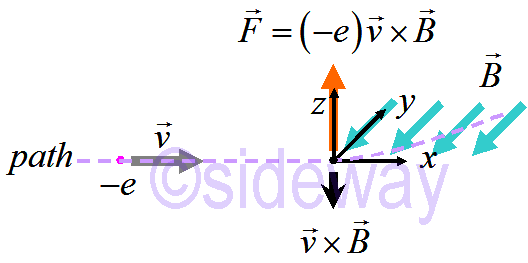 For an electron charge −𝑒, the magnetic force on a moving electron is in opposite direction to the direction of the cross product
For an electron charge −𝑒, the magnetic force on a moving electron is in opposite direction to the direction of the cross product 𝑣×
𝐵
Motion in a Magnetic Field
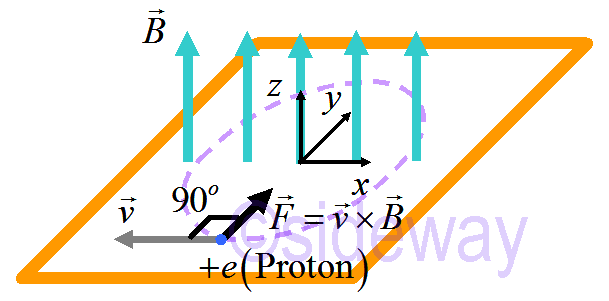 In a large area with constant 𝐵⊥𝑣.
In a large area with constant 𝐵⊥𝑣.
𝑑𝑝𝑑𝑡
𝐵=
𝜇04𝜋
𝑞and Biot-Savart law of current in a wire𝑣×𝑟|𝑟|2
𝐵=
𝜇04𝜋
𝑙×
Magnetic Force in a Wire
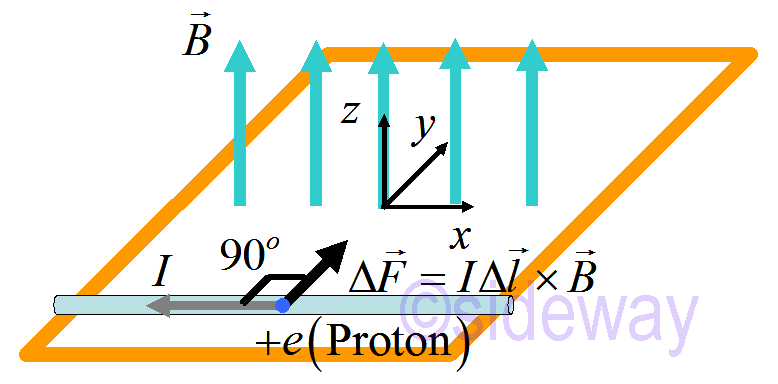 The magnetic force due to point charge is ∆
The magnetic force due to point charge is ∆𝐹mag=𝑞
𝑣×
𝐵and magnetic force due to current in a wire is
𝐹mag=𝐼∆
𝑙×
𝐵
Magnetic Force between Parallel Wires
When currents flow in two paralle wire are in same direction, two parallel wires attract each other.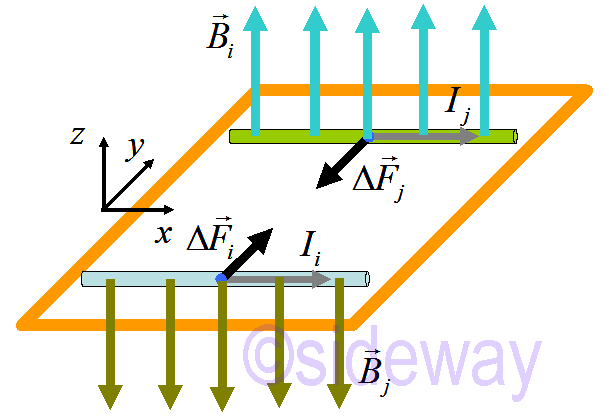 When currents flow in two paralle wire are in opposite direction, two parallel wires repel each other
When currents flow in two paralle wire are in opposite direction, two parallel wires repel each other
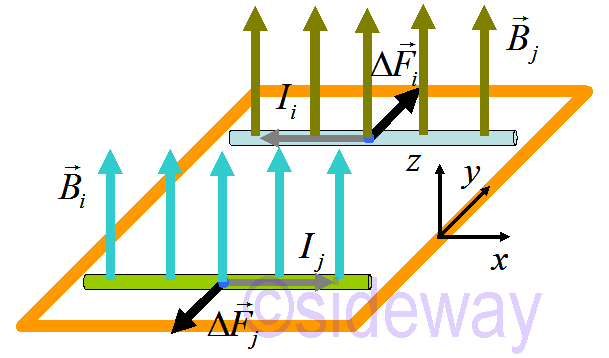
Hall Effect
By measuring the Hall effect for a particular material, the sign of the moving particles that make up the current can be determined. Why would it be anything other than electrons, negative charges. Semiconductors: sometimes currents is carried by electrons, but sometimes it is carried by the holes. In semiconductors, holes, missing electrons, in the electron sea behave like positive charges.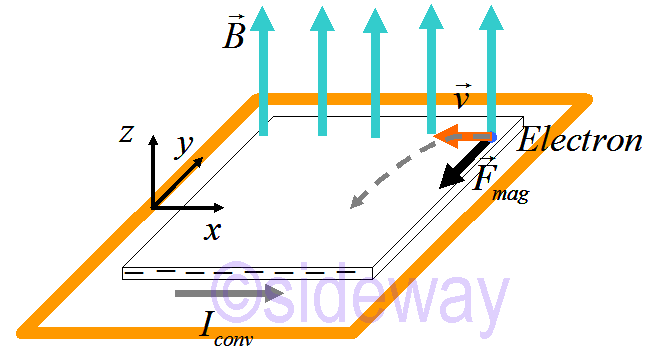 When electron current flows through a metal bar under a magnetic field, all moving electrons will be pushed to one side near the bottom. Negative charges are built up one side and expose atomic cores at the other side near the top. In other words, a polarization is built up on the bar by stucking electrons on one side. The electron current will move straight forward again when the gathered charges on the bottom are strong enough to prevent electrons from getting defected by balancing the magnetic force. A voltage difference ∆𝑉 is induced in the metal bar.
When electron current flows through a metal bar under a magnetic field, all moving electrons will be pushed to one side near the bottom. Negative charges are built up one side and expose atomic cores at the other side near the top. In other words, a polarization is built up on the bar by stucking electrons on one side. The electron current will move straight forward again when the gathered charges on the bottom are strong enough to prevent electrons from getting defected by balancing the magnetic force. A voltage difference ∆𝑉 is induced in the metal bar.
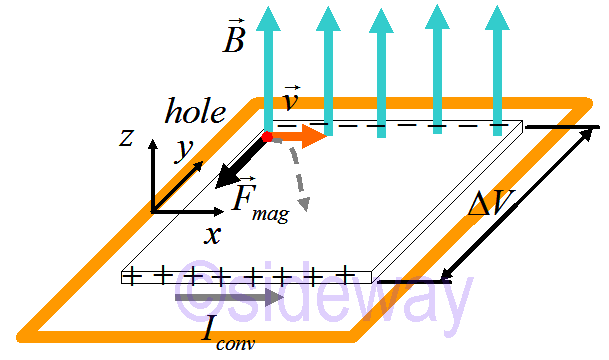 Similarly, when conventional current of holes flows through a material bar under a magnetic field, all moving holes will be pushed to one side near the bottom. Positive holes are built up on one side and expose negative charges at the other side near the top. In other words, a polarization is built up on the bar by stucking hole on one side. The positive hole current will move straight forward again when the gathered holes on the bottom are strong enough to prevent holes from getting defected by balancing the magnetic force. A hall voltage ∆𝑉 is induced in the material bar. The hall voltage due to holes is opposite to the voltage due to electrons.
Similarly, when conventional current of holes flows through a material bar under a magnetic field, all moving holes will be pushed to one side near the bottom. Positive holes are built up on one side and expose negative charges at the other side near the top. In other words, a polarization is built up on the bar by stucking hole on one side. The positive hole current will move straight forward again when the gathered holes on the bottom are strong enough to prevent holes from getting defected by balancing the magnetic force. A hall voltage ∆𝑉 is induced in the material bar. The hall voltage due to holes is opposite to the voltage due to electrons.
Source and Reference
https://www.youtube.com/watch?v=P-5wV6rt_Aw&list=PLZ6kagz8q0bvxaUKCe2RRvU_h7wtNNxxi&index=19©sideway
ID: 200100902 Last Updated: 1/9/2020 Revision: 0
Latest Updated Links
- Panasonic SR-CK05 RiceCooker CW-HZ70AA(last updated On 11/17/2025)
- Panasonic Hood Structure Ventilating Fan Blade Diameter: 8in FV-20WH307 CW-HZ70AA(last updated On 11/16/2025)
- Panasonic Window Mount Thermo Ventilator FV-30BW2H CW-HZ70AA(last updated On 11/15/2025)
- Panasonic Inverter PRO Inverter Window Heatpump Air-Conditioner (3/4 HP) CW-HZ70AA(last updated On 11/14/2025)
- Panasonic Inverter Window-Split Type Cooling Only Air-Conditioner (1 HP) CS-U9YWA(last updated On 11/13/2025)
- Panasonic Inverter Steam and Grill_Microwave Oven 27L NN_DS59NB(last updated On 11/12/2025)
- Panasonic KY-C223B Induction Cooker(last updated On 11/11/2025)
- Focus M41 Single lever kitchen mixer 160(last updated On 11/10/2025)
- Focus Single lever basin mixer 230(last updated On 11/9/2025)
- Precision Start Thermostat shower mixer(last updated On 11/8/2025)
- Tempesta 100 Shower Rail Set 3 sprays(last updated On 11/7/2025)

 Nu Html Checker
Nu Html Checker  53
53  na
na  na
na
Home 5
Business
Management
HBR 3
Information
Recreation
Hobbies 8
Culture
Chinese 1097
English 339
Travel 18
Reference 79
Hardware 40
Computer
Hardware 259
Software
Application 213
Digitization 37
Latex 52
Manim 205
KB 1
Numeric 19
Programming
Web 289
Unicode 504
HTML 66
CSS 65
SVG 46
ASP.NET 270
OS 431
DeskTop 7
Python 72
Knowledge
Mathematics
Formulas 8
Set 1
Logic 1
Algebra 84
Number Theory 206
Trigonometry 31
Geometry 34
Calculus 67
Engineering
Tables 8
Mechanical
Rigid Bodies
Statics 92
Dynamics 37
Fluid 5
Control
Acoustics 19
Natural Sciences
Matter 1
Electric 27
Biology 1
